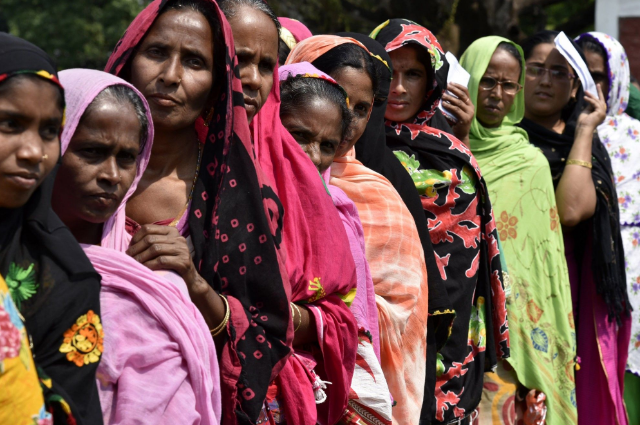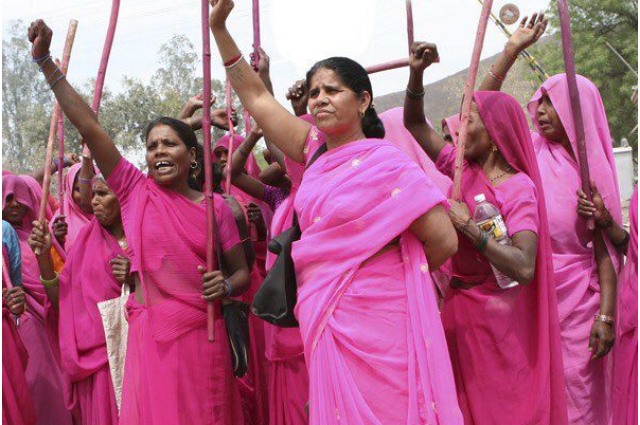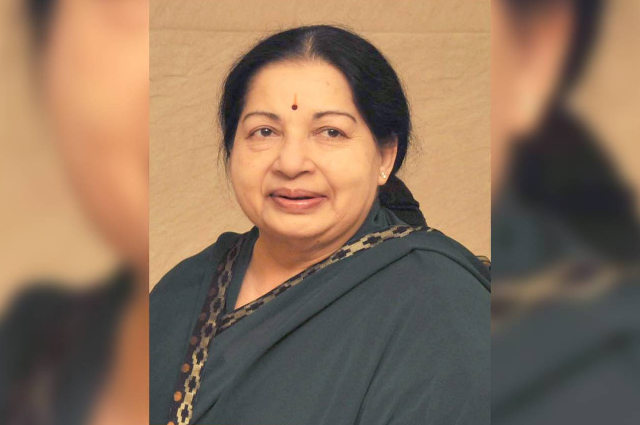Introduction:
In India, the picture of women’s political participation in the decision-making process is dismal. According to the Economic Survey, though 49% of the total population of India constitutes women, their political participation is very low in comparison with most developing countries. Though women’s political participation is regarded as an essential element in all forms of development, the gender equality policies of India remain under scrutiny. Many initiatives, though not sufficient, have been adopted to increase the political representation of women through the decentralization of power in local self-government institutions. But many obstacles still glare in the way of women’s political empowerment.
Present Status of Women in the 17th Lok Sabha:
However, after the publication of the result of the Lok Sabha elections, in 2019, the picture is a little optimistic. Out of the total number of 61.30 crore voters, there are 29.24 crore women voters. Women voters comprise 47.7% of the total voters. The 17th Lok Sabha has witnessed 78 women MPs, the highest number of women candidates since 1952. It constitutes 14.39% of the total MPs in Lok Sabha. However, only 724 women candidates out of a total of 8049 candidates were in the fray in the 17th Lok Sabha elections. The percentage of women candidates was just a little less than 9%. Needless to say, the performance of the women candidates is far better than their male counterparts. Yet several impediments refrain Indian women from participating in direct politics.
Lack of Political Education and Illiteracy:
Illiteracy is another reason that has put women’s participation in Indian politics on the back burner. The results of the 2011 census revealed that there has been an increase in literacy in the country. The literacy rate in the country is 74.04 percent, 82.14 for males and 65.46 for females. Illiterate women in many cases cannot understand the political system and its complexities. Illiterate women become the victims of exploitation in the form of their names being left off the voter lists. Such exploitations prevent women from exercising their political rights. Illiterate that women are not paid dignity and respect in the political arena. Women are “persistently mocked and devalued in the panchayats if they are illiterate”. On the contrary, literacy that gives women better access to communication through reading newspapers and coming across other mass media, makes them well-informed about political issues and purposes as well. Despite a considerable number of women workers in the mainstream political parties in our country, they are woefully marginalized by a party ticket to run in elections due to a lack of political education. As per the Global Gap Report 2021 published by the World Economic Forum, India is ranked 114th out of 156 countries in educational attainment. The Global Gender Gap Index (GGGI) examines the gap between men and women in four dimensions. They are Economic Participation and Opportunity, Educational Attainment, Health and Survival, and Political Empowerment. According to the Global Gender Gap Report 2021, India is ranked 140 out of 156 nations with a score of 0.625 out of 1. Needless to say, the report reveals a bleak involvement of education as a factor that determines women’s participation in politics and social mobility. It cannot be denied that women should be bolstered with formal education to be infused with the knowledge and ability of leadership in the field of politics. On the other hand, women in most cases become lackadaisical and impractical towards their basic political rights. Both general education and political education are complementary to each other, women’s poor participation in politics makes gender equality a distant dream in our country. Besides, illiteracy and dearth of proper education impede women who somehow manage to participate in politics to run the political office competently.
Unlike male participation in politics which is not largely affected by formal education, female literacy has a direct impact on the participation and representation of women in politics. It is explicit that the majority of Indian women politicians who hold important political positions are highly educated. Therefore, education plays a vital role in the case of women politicians, political representation, and leadership. Women’s total engagement and representation in politics are not proportionate to female education in the states of our country. Surprisingly, despite improvement in female literacy over the previous decades, female voter participation has not significantly improved. In Uttar Pradesh, the largest state in the country, about 10% of the women are represented in state assemblies despite 77.5% of women having graduate and postgraduate degrees. But in the case of male representation, the percentage is reciprocal. Naturally, female politicians are found more educated than their male counterparts. Ironically, despite having much more formal education and literacy, women lag in terms of representation. It can be concluded that unlike male politicians political education and formal education are indispensable for women to enter politics in our country. In a country where half of the total voters are women, empowerment of women in the form of political representation to ensure decision-making without gender discrimination must be laid emphasis. Therefore, women deserve equal representation in the government and policymaking procedures to reflect the demands and grievances of the entire society.
Caste-based Discrimination:
Caste-based discrimination is another major factor that discourages Dalit and Schedule Caste women to participate in active politics. Besides, women burdened with household duties get little time to spend in political organizations. They are not allowed to stay out of home round the clock to keep in mass contact which is the prerequisite of being a successful political leader. The social category of the Dalit-Bahujan women is quite obscure because they are the silent victims of hierarchies based on class, caste, and gender. They are subjected to caste violence and exclusion even within the legal framework. The Dalit-Bahujan women are deliberately excluded from mainstream politics as they are hardly recognized as a social category. When their existence in politics is discerned, there must be something sinister keeping in mind vote-bank equations. Discrimination is further perpetuated when they are denied decision-making. Very often than not, they are denied information, disrespected, ignored, humiliated, and even beaten. Because of their vulnerable position they face a social boycott on the part of the upper caste. The consequences of irrational caste structures have reduced the Dalit-Bahujan women politicians to insignificant in our political arena. Patriarchy is another blow that has squandered the Dalit-Bahujan women as ‘irrational and emotional’ in making political decisions. It is apprehended that the political empowerment of Dalit-Bahujan women might upset the structure of caste-patriarchy. Therefore, they are ignored or missed out on political discourses even by their castes.
Misogyny and Patriarchy:
Misogyny, which is the by-product of patriarchy, is another hindrance that has largely quashed the participation of women in politics in our country. Misogyny is a deep-rooted problem almost in every sphere of life not excluding politics. A large number of political leaders and institutions cannot shrug off this deep-rooted scourge inherited from generation to generation. Mahila Congress President Sushmita Dev commented, “Misogyny is much deeper in politics than in any other profession. That’s because politics is harsher than any other calling. A woman politician exercises the same power as a misogynist imagines a male politician alone can exercise. That makes sexism deeper.” Needless to say, misogyny prevails in Indian politics in a rampant way. As the voters have been quite accustomed to it, misogynistic offensiveness fails to influence ballot boxes. It runs so deep into Indian politics that even women also perpetuate and take refuge in the misogyny and old feudal patriarchal system of loyalties for political gain.
Social Discrimination:
Women’s political participation is urgently needed to focus on the legitimate demands of women’s rights and equality against any sort of discrimination imposed by the male-dominated society. Over the years women have been enjoying sub-human status in society. Women’s representation in large numbers in politics has undoubtedly allowed bringing about drastic changes especially in rural areas by underscoring their everyday issues including education, daycares, child care, vaccination, birth control, gender justice, right to property, control over resources, domestic violence, social and political discrimination and so on. Above all, a large section of women finds a space in the decision-making process of the country.
They exhibit the active leadership of women in local government. Despite all these, there are some flip sides to the facts. In many cases, elected women are found dictated by men who become the de facto political representatives. Women of the country were very optimistic when the 33% Women’s Reservation Bill passed in Rajya Sabha on 9th March 2010. The present NDA government also in their election promise elevated the expectation of women with the rhetoric of ‘not 33 but 50%’. But the fact is that successive governments have shelved the Women’s Reservation Bill on the pretext of ‘lack of political consensuses’. Therefore, Indian women have ‘miles to go to achieve political emancipation in the true sense of the term.
Family Burden:
The role of managing household activities has been traditionally assigned to women. Due to the uneven distribution of family care responsibilities women spend far more time than their male counterparts in our country. Housewives not only have to give their time and effort at the time of pregnancy and childbirth but it continues till the child is dependent on parents for care. They have to devote much time even to unpaid works such as subsistence production including fetching water from distant places, household chores like taking care of all the members of the family, preparing food, looking after the children and the elderly, attending to the sick, educating the school going children in the primary stage, marketing and even doing banking and other activities that are expected to be done by the male members. Above all, they are not paid for their household chores. But the time exhausted for such unpaid chores reduces the time available for women and leaves them with little opportunity to participate in political activities.
Criminalization and Violence:
Ever-increasing criminalization and violence in politics are also the major factors that make women fight sigh of active participation in politics. They become the easy victims of physical and sexual harassment and violence of their male counterparts not only of the opposition political parties but also of their ones. Martha C. Nussbaum opines, “In the larger society, violence and the threat of violence affects many women’s ability to participate actively in many forms of social and political relationship, to speak in public, to be recognized as dignified beings whose worth is equal to that of others.”
Violence Against Women:
Violence especially sexual violence against women is another major/formidable impediment in the way of women’s participation in politics. Sexist tendencies are deeply rooted in our culture but they find their extreme exposure in Indian politics. The Canadian Panel on Violence Against Women, 1993 appropriately stated, “Women will not be free from violence until there is equality, and equality cannot be achieved until the violence and threat of violence are eliminated from women’s lives.” Unfortunately, the ethics, values, morals, and culture of the society have been structured in such a way as to promote the exploitation of this segment. Women have been subordinated, subjugated, and exploited ever since the dawn of civilization down to the present era. Sexist violence perpetrated against women at the local and regional level is a common incident when women are candidates or even hold elected posts. Incivility, insults, and attacks notably via social media against women are explicit when women try to turn up in the political arena. Needless to say, such sexist violence undermines women’s right to fully and equally participate in political and public life. Acts of sexism are parts of a continuum of violence creating a climate of intimidation, fear, discrimination, and insecurity restraining opportunities for women to join politics. Very often than not, women who want a career in politics have to face sexual harassment and persuasion or coercion for sexual favor by the opposition and even from their political parties overtly or covertly. Women have to be mentally prepared beforehand to deal with these. What’s worrying is the impunity with which sexism and misogyny continue to be practiced and condoned in Indian politics. According to t a study conducted in India, Nepal, and Pakistan by the Centre for Social Research and UN Women, more than 60% of women do not participate in politics due to fear of violence. It is due to the legislation that does not deal strictly with offenders to prevent violence against women in politics. Ranjana Kumari, the director of the Centre for Social Research in Delhi and Chairwoman of Women Power Connect said, “South Asia is home to one-fifth of the world's population and one-third of South Asian women experience violence throughout their lives, which is also a common feature of South Asian politics. Candidates, their families as well as voters have routinely faced violence during elections. The violent nature of politics within South Asia often deters women from participating within the political sphere.”
Lack of Social, Economic, and Friendly Milieu:
Lack of social, economic & friendly milieu: Women have to accept the dictates imposed on them and bear the burden of society. Political attitudes not only determine how many female candidates win a general election but also directly and indirectly how many are considered and nominated for office. Women are not provided with adequate financial support from their respective political parties because of their low proportion in the inner political party structure in our country. Therefore, they very often fail to amass resources and support for looking after their political constituencies. Besides, women have to struggle hard and face multi-dimensional issues to create space for them in the party as the milieu of almost all political parties is not women-friendly. Women, in general, find it difficult to adjust to the political environment dominated by corruption, criminalization, and a sense of insecurity.
Some Common Impediments:
The two major deterring factors that have been identified behind the minuscule number of women representatives in Indian politics are lack of confidence and finance. Their over-dependence on male members of society in everyday life generally makes them disabled in decision making. Besides, a large number of women, hardly being financially self-dependent, do not enjoy the privilege of participating in politics infringing on the consent of the other male members of the family. Feminine shyness which is considered in the patriarchal society as the ornament of a woman generally hinders the way of a woman from active participation in politics. Despite having innate power of eloquence, natural shyness hinders their way to become successful public speakers. Lack of support from the electorates and the higher leadership of the concerned political parties are also responsible for this deplorable situation.
History of Women Suffrage in India:
Though India granted universal adult suffrage to 80 million women voters in 1947, some 85% of them had been deprived of exercising their franchise during British India. It was argued by the British officials that the universal franchise was a “bad fit for India”. During colonial India, elections were exercises in restricted democracy with a limited number of voters who would cast their ballots in seats allotted along the religious, community, and professional lines. Even Mahatma Gandhi was against women's suffrage initially. But Indian women's organizations fought tooth and nail for the right of women's suffrage. Bombay and Madras were the first two provinces that were granted the limited vote to women in 1921. Seven other provinces also allowed women's franchises between 1923 and 1930. Despite women's suffrage in all the provinces, the government of the Bihar and Orissa province tried to reduce the number of voters by cutting short women voters. The government argued that divorced women and widows should be removed from the electoral roll. Again in Madras province, only the pensioned widow and the mother of an officer or a soldier or the wife of a taxpayer could qualify to be a voter. In some provinces, women who refused to give their names and introduced themselves as the wife, daughter, or widow of a man, found trouble enrolling their names in the voter list. However, colonial practices were done away with in Independent India. Rather the government of India encouraged women to register their names as voters.
Pending Women Reservation Bill:
Women's Reservation Bill: In 1993, a constitutional amendment was passed in India that called for a random one-third of the village council leader, or Sarpanch, positions in gram panchayat to be reserved for women. But more than 25 years have elapsed since the Women’s Reservation Bill – a constitutional amendment proposing that 33% of seats in India’s Parliament in the Centre and State Assemblies be reserved for women – was first introduced to the Indian Parliament in 1996. The Women’s Reservation Bill or The Constitution (108th Amendment) Bill, 9th March 2010 is still a pending bill in the Parliament of India which proposes to amend the Constitution of India to reserve one-third of all seats in the Lower House of Parliament of India and all state legislative assemblies for women. The seats were proposed to be reserved in rotation and would have been determined by the draw of lots in such a way that a seat would be reserved only once in three consecutive general elections. Even after 25 years, the Women’s Reservation Bill is languishing in the name of procrastination owing to the political leaders’ reluctance to share power and fear of losing bastions of electoral support. On the other hand, according to studies and experts, a lackadaisical attitude towards political participation by women has an impact on policy framing and diversity in decision making. India ranks 148th out of 193 countries based on the percentage of elected women representatives in their national parliaments. The global average for “lower chamber or unicameral” is 25-8%, whereas, India stands at 14.4% with 78 out of 543 Lok Sabha representatives elected in 2019 being women, the highest number to date. On the other hand, India’s parliament is bi-cameral and female members make up 11.6% of the Upper House or Rajya sabha.
Unfortunately, women's representation in the temple of the largest democracy is deplorable. A political party decided to reserve 40% of its party tickets for women in the State Assembly elections to be held next year. It talks about the need to increase women's representation in representative institutions at the Centre and State levels. As per the data compiled by the Inter-Parliamentary Union, of which India is a member, women represent 14.44% of the total members of the Lok Sabha. As per the latest Election Commission of India (ECI) data of October 2019, women represent 10.5% of the total members of the Parliament. The scenario for women Members of Legislative Assemblies (MLAs) across all state assemblies in India is even worse, with the national average being a pitiable 9%. In the last 75 years of independence, women’s representation in Lok Sabha has not even increased by 10%.
Silver Lining:
Needless to say, substantial representation of women at local government levels has now brought about a significant revolution in the political empowerment of women in society. The survey said, “There are 13.72 lakh elected women representatives (EWRs) in PRIs (Panchayati Raj Institutions) which constitute 44.2% of total elected representatives (ERs) as of Dec 2017”. Besides, the survey added that women sarpanches accounted for 43% of total gram panchayats (GPs) across the country.
As many as 27 out of 41 sitting women MPs including Sonia Gandhi, Kirron Kher, and Hema Malini have managed to retain their seats. It corroborates the fact that about 65.85% of the women candidates who were fielded in the Lok Sabha polls, in 2014 and 2019 have performed well. On the other hand, Smriti Irani defeated Rahul Gandhi, the President of INC, in the Congress’ home turf Amethi, who had proved herself a giant killer in her comeback fight. Again, Pragya Thakur, the BJP candidate from Bhopal, had stunted vanquishing Digvijoy Singh, the former Chief Minister cum veteran Congress leader of Madhya Pradesh. Even DMK candidate Kanimozhi Karunanidhi who had been accused of corruption has emerged victorious from Thoothukudi. Though our Prime Minister boasted of the 17th Lok Sabha having the largest number of women parliamentarians, the percentage is far behind the expectation dreamt in the Women Reservation Bill.
Some Successful Women Politicians in India:
Despite all the impediments in the way of women’s participation in Indian politics, the paradox is that our country has witnessed the presence of a good deal of strong and authoritative women leaders. They have not only played significant roles at the higher echelons of power but also stamped their brilliant marks at the grassroots level in political and social movements. Their schemes and political traits have been appreciated by many and criticized by many more. However, their contributions to the development of the country can never be overlooked. Here I find an opportunity to mention a few of them.
- Indira Gandhi: Indira Gandhi is rightly considered the most powerful woman politician in Indian politics. She was the only female Prime Minister who ruled for nearly two decades. She was a towering personality who with her charismatic leadership forged close relations with the USSR, US, and China at a time during the cold war and led to a major shift in India’s foreign relations. She exhibited her guts to encourage India’s nuclear program Operation Smiling Buddha. Her strong leadership enabled India’s first successful nuclear bomb test conducted at Pokhran in Rajasthan on 18 May 1974 by the Indian Army. But her greatest achievement was India’s decisive victory over Pakistan in the Indo-Pak War that occurred in the last two weeks of the Bangladesh Liberation War which led to the formation of independent Bangladesh. She was hailed as Goddess Durga by the then Atal Behari Vajpayee, the then opposition leader. The flip side of her tenure was that widespread atrocities were carried out during the state of emergency instituted by Indira Gandhi from 1975 to 1977. Then basic civil rights were suspended and the press was censored.
- Nandini Satpathy: She was appointed as the Deputy Minister of Information and Broadcasting and later as Minister. She was known to be the right hand of Prime Minister Indira Gandhi. She was the first woman Chief Minister of Odisha. She was seven times a member of Parliament and three times a member of the Legislative Assembly.
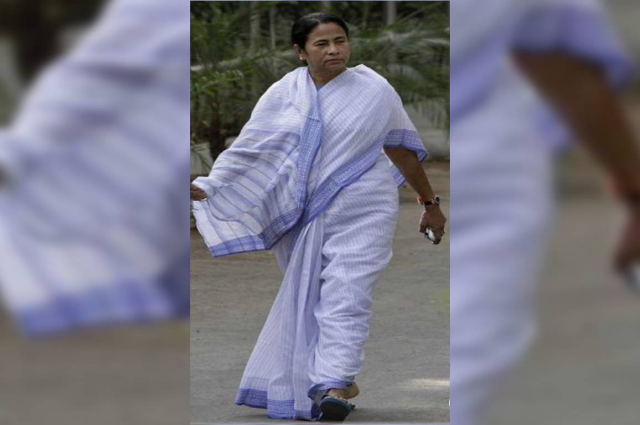
- Mamata Banerjee: The first woman Chief Minister of West Bengal and the first woman Railway Minister of India. She founded the All India Trinamool Congress in 1997. She was elected twice Chief Minister of West Bengal. She is the incumbent Chief Minister of the state. She previously served twice as Minister of Railways, Minister of Coal, Minister of Human Resource Development, Youth Affairs and Sports, and Women and Child Development in the cabinet of the Indian government. She rose to prominence after opposing the erstwhile land acquisition policies for the industrialization of the Communist-led government in West Bengal. She defeated the 34-year-old Left Front government and pulled off a landslide victory for the AITC in 2011. She is not only a firebrand orator but also a master strategist.
- Sonia Gandhi: One of the most popular women politicians in India. She is the president of the Indian National Congress, the grand old party. Her term as the president has been the longest in the history of Congress. She has been ranked 9th as the most powerful woman in the planter by Forbes magazine. Mrs. Gandhi is also the chairperson of the UPA.
- Jayalalitha Jayaram: She was the Chief Minister of Tamil Nadu. She was popularly addressed as ‘Amma’ by commoners. She was also the general secretary of All India Anna Dravida Munnetra Kazhagam. She became a Rajya Sabha MP.
- Mayawati: Mayawati, the most powerful Dalit leader in India, has served four separate terms as the Chief Minister of Uttar Pradesh four times. She is the national president of the Bahujan Samaj Party (BSP). Her party focuses on a platform of social change for Bahujans i.e. Other Backward Castes, Scheduled Castes, and Scheduled Tribes. Her rise from humble beginnings has been called a “miracle of democracy” by P. V. Narasimha Rao. Her powerful influence over UP’s political spectrum is revered by all the political leaders and people in general.
- Brinda Karat: She became the first woman member of the CPI (M) Politburo, the highest decision-making body of the party. She was a member of the Rajya Sabha in 2005. She was elected general secretary of the All India Democratic Women’s Association (AIDWA) from 1993 to 2004.
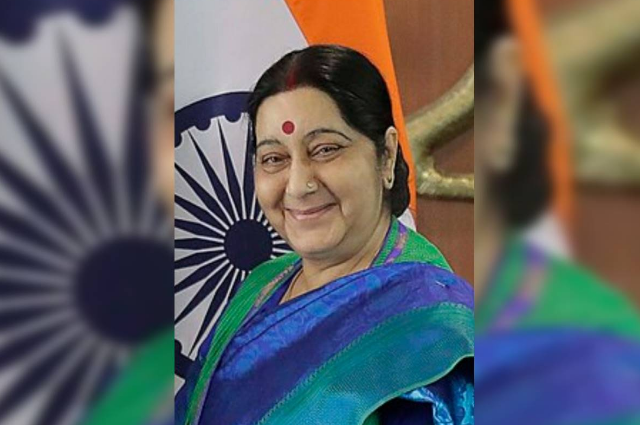
- Sushma Swaraj: A BJP leader who was seven times Member of Parliament and three times Member of the Legislative Assembly. She was the Union Minister of External Affairs of India. She was the first female Chief Minister of Delhi. She was the Leader of Opposition in the 15th Lok Sabha.
- Sheila Dikshit: Sheila Dikshit, a senior member of the Congress party, was the Chief Minister of Delhi from 1998 to 2013. Apart from this, she became the governor of Kerala.
- Vasundhara Raje Scindia: She was the first woman Chief Minister of Rajasthan. Despite facing a lot of caste violence and mutiny by local leaders during her five-year term as Chief Minister, She exhibited a solid style of leadership by focusing on infrastructure and social initiatives of the backward state. However, she proved one of the most powerful politicians in the country.
- Droupadi Murmu: Droupadi Murmu, a tribal woman, is the 15th President of India. Like most other tribal women her life is also full of hardships and poverty-stricken. Her father, Biranchi Narayan Tudu, and grandfather were village heads under the Panchayati Raj system. Droupadi joined the Bharatiya Janata Party in 1997. Doing justice to the leadership legacy, she was elected as the councilor of Rairangpur Nagar Panchayat in Odisha. She also served as Rairangpur’s Vice-Chairperson for a brief tenure of one year. In the 2000 assembly elections, she was elected as an MLA of the BJP from the Rairangpur constituency in Odisha and served as the Minister of State with Independent Charge for Commerce, Transport, Fisheries, and Animal Resources Development till 2004. In 2004, she was re-elected. She was conferred Nilkantha Award for best MLA by Odisha Legislative Assembly in 2007. She was appointed the Governor of Jharkhand in 2015. She held the record of being the first tribal woman Governor in India and completed her five-year term.
Conclusion:
Democratization & Decision Making: Perpetual political isolation of women will prevent them from influencing reforms and implementing and enforcing legislations that are necessary to forestall maltreatment, atrocities, gender inequalities, exploitations, violence, and other abuses that they are subjected to in their everyday lives. On the contrary, it is argued that fair participation of women in politics is necessary for better economic performance, lesser crimes and corruption, faster and efficient work, and lesser vulnerability to political opportunism. More and more women leadership in the politic of our country is the need of the hour because women legislators who come to power will dismantle the misogynist rants proscribing women and their leadership skills as incompetent and encourage more women to be decision-makers in a highly male-dominated society. Larger participation of women in politics will enhance gender equality and leave positive effects on a range of policy issues underscoring family, women’s rights issues, and quality of life such as health and education. Ironically, laws for the protection and safeguard of women’s rights are framed from a patriarchal lens in the male-dominated legislature. Needless to say, to imagine a gender-just society in a male-dominated political milieu is nothing but daydreams for women legislatures supposedly can undo these wrongs with a strong political will and determination. Besides, sexual identity upsets the homogenization of politics leaving behind about half of the human resources of a nation in the nadir of woes.
References:
- Women in Indian Politics: Democratisation and Decision Making by Rutvi Dattani in The Times of India on May 10, 2021
- Did the British Empire resist Women’s suffrage in India? by Soutik Biswas in BBC on Feb 22, 2018
- Women and misogyny in Indian Politics by Kartikeya Sharma in WION on Oct 22, 2010
- More women in politics will strengthen democracy by S Y Quraishi in The Indian Express on March 8, 2022
- Women And The Indian Political Process by Juny Varghese in Legal Service India
- What Is the Role of Women in Indian Politics? Growing Stronger in KNOWLEDGE AT WHARTON on May 21, 2009
- The link between education and participation of women in politics by Kritanjali Chaurasia in Observer Research Foundation on Jan 29, 2022-07-2499
- India’s Political Institutions Grapple with Misogynistic Culture as Sexual Violence Persists in the Country by Sai Rayala in The Yale Review of International Studies in January, 2021
- When it Comes to Politics in India, Sexism is the Norm by Swati Chaturvedi in WIRE on Jan 25, 2017
- Culture of abuse and misogyny in Indian politics: A Reality Check in OpIndia on July 27, 2016
- Violence against women in politics in UN Women 2014
- The Link Between Education and Participation of Women in Politics in Outlook Magazine on July 13, 2022-07-24
- Women’s Reservation Bill in Rajya Sabha: What it is and the jpolitical hold-up against it in Firstpost. April 4, 2022

